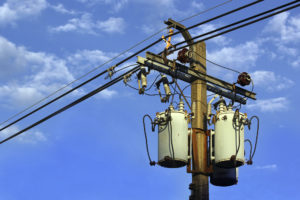Facts, Figures, and Findings from EPRI Research, Reports, and Other Sources

Field Tests Indicate Up to 30% Energy Boost for Bifacial Solar Modules
"Bifacial" solar modules"Bifacial" solar modules offer the promise for greater electricity output, but they face significant challenges to widespread adoption, according to an EPRI technology assessment. A key R&D focus in solar is increasing electricity generation over the lifetime of a solar power plant, and bifacial solar modules represent a potential step forward. Under controlled experimental conditions, these modules can boost power generation by as much as 50% relative to traditional modules, but field tests suggest an increase of 5–30%. The wide range is a result of factors ...
Read More
"Bifacial" solar modules"Bifacial" solar modules offer the promise for greater electricity output, but they face significant challenges to widespread adoption, according to an EPRI technology assessment. A key R&D focus in solar is increasing electricity generation over the lifetime of a solar power plant, and bifacial solar modules represent a potential step forward. Under controlled experimental conditions, these modules can boost power generation by as much as 50% relative to traditional modules, but field tests suggest an increase of 5–30%. The wide range is a result of factors ...
Read More

EPRI Demonstrates Comprehensive Method to Model Benefits and Costs of Distributed Energy Resources
Can solar and other distributed energy resources (DER) help utilities serve load growth and avoid infrastructure investment? The answer from an EPRI study: It depends on complex local factors, including load-growth rates, load variation over time, location and other characteristics of grid-connected DER, grid design, location and timing of grid upgrades, and environmental conditions. DER may benefit the grid in some cases, but not others. Following the approach described in EPRI’s Integrated Grid Benefit-Cost Framework, researchers modeled feeders in distinctly different distribution grids—Con Edison’s mesh network in ...
Read More
Can solar and other distributed energy resources (DER) help utilities serve load growth and avoid infrastructure investment? The answer from an EPRI study: It depends on complex local factors, including load-growth rates, load variation over time, location and other characteristics of grid-connected DER, grid design, location and timing of grid upgrades, and environmental conditions. DER may benefit the grid in some cases, but not others. Following the approach described in EPRI’s Integrated Grid Benefit-Cost Framework, researchers modeled feeders in distinctly different distribution grids—Con Edison’s mesh network in ...
Read More

It’s Complicated.
What’s the value of wind and solar generation? The answer: It depends on many factors—in particular, installed renewable capacity, variability of output over time and across regions, operational flexibility of fossil and nuclear power plants, regional electricity trade, and energy storage. This conclusion comes from a novel modeling framework developed by EPRI, which was applied to evaluate solar and wind deployment scenarios in California and Texas. The framework can be used to examine other renewable technologies and states. Researchers analyzed long-term electric sector capacity planning along with various aspects of power market operations, providing a detailed look at ...
Read More
What’s the value of wind and solar generation? The answer: It depends on many factors—in particular, installed renewable capacity, variability of output over time and across regions, operational flexibility of fossil and nuclear power plants, regional electricity trade, and energy storage. This conclusion comes from a novel modeling framework developed by EPRI, which was applied to evaluate solar and wind deployment scenarios in California and Texas. The framework can be used to examine other renewable technologies and states. Researchers analyzed long-term electric sector capacity planning along with various aspects of power market operations, providing a detailed look at ...
Read More

EPRI Study: Electrification Can Save Detroit Airport Nearly $16 Million
If deployed at Detroit Metropolitan Wayne County Airport, electric ground support equipmentground support equipment and gate electrificationgate electrification technologies could yield about $16 million in lifetime savings and beneficial reductions in emissions relative to diesel-powered counterparts, according to EPRI research. This assumes that the airport charges the equipment during off-peak times at lower utility rates. Researchers identified potential to electrify 452 diesel- and gas-powered ground-service units, 19 diesel-powered heating/cooling units, and 38 diesel ground-power units for a 20,000-ton reduction in annual CO2 emissions. Other insights based on the study:
If deployed at Detroit Metropolitan Wayne County Airport, electric ground support equipmentground support equipment and gate electrificationgate electrification technologies could yield about $16 million in lifetime savings and beneficial reductions in emissions relative to diesel-powered counterparts, according to EPRI research. This assumes that the airport charges the equipment during off-peak times at lower utility rates. Researchers identified potential to electrify 452 diesel- and gas-powered ground-service units, 19 diesel-powered heating/cooling units, and 38 diesel ground-power units for a 20,000-ton reduction in annual CO2 emissions. Other insights based on the study:
- ...
Read More

EPRI Examines How Utilities Can Help Guide Customers in Adopting EVs in Their Service Territories
EPRI in 2017 will survey residential utility customers to examine their stated preferences for electric vehicles (EVs) and identify how utilities may help support EV adoption in diverse service territories. In a 2014 EPRI survey of more than 4,000 EV owners in 11 states and the District of Columbia, only 5% said that the utility played a role in their purchase decision, and just 4% changed their utility rates after the purchase to lower charging costs. Yet, respondents appeared to envision a significant role for ...
Read More
EPRI in 2017 will survey residential utility customers to examine their stated preferences for electric vehicles (EVs) and identify how utilities may help support EV adoption in diverse service territories. In a 2014 EPRI survey of more than 4,000 EV owners in 11 states and the District of Columbia, only 5% said that the utility played a role in their purchase decision, and just 4% changed their utility rates after the purchase to lower charging costs. Yet, respondents appeared to envision a significant role for ...
Read More

